At American Collectors Insurance, we don’t stop at offering great rates on great policies. Our TreasureGuard policy provides broader protection and greater flexibility. Receive a classic car insurance quote in minutes to see how you can save.
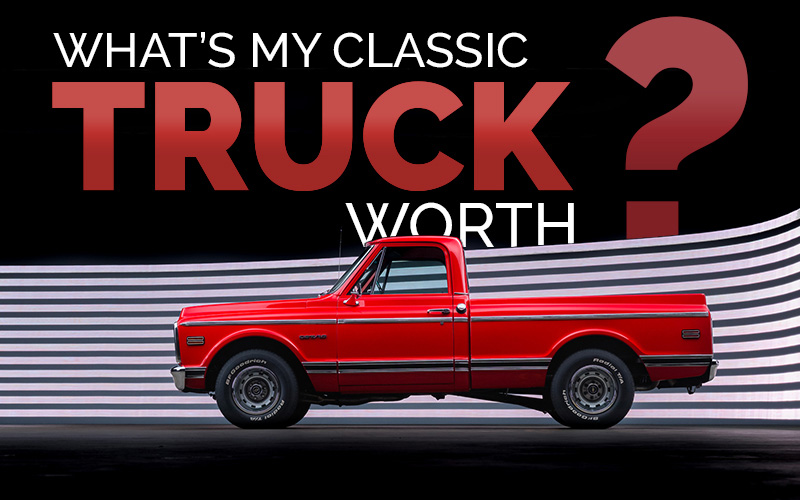
Before we dive into classic truck valuation, let’s look at the onset of America’s love of trucks. It’s hard for classic enthusiasts to consider the showrooms of 1957 without immediately thinking of the Bel Air, Fairlane, and Fury – but there was a much bigger revolution happening at those showrooms that served rural customers, and it was truck-shaped. The pickup truck was about to come into its own as a vehicle with applications far beyond the farm, and that transformation would eventually lead to pickups consistently topping the lists of best-selling vehicles in America today.
Over the past few years, we’ve seen a lot of excitement built around classic trucks. Whether your definition of “classic truck” is a one-ton hauler from the thirties or the remarkable Chevrolet 454SS on the now-venerated “OBS” GMT400 platform, the values are soaring to match. That puts would-be buyers and sellers of classic trucks in an awkward position. They know that their old farm or ranch pickup is worth a lot more than it used to be – but how much is it worth on the open market?
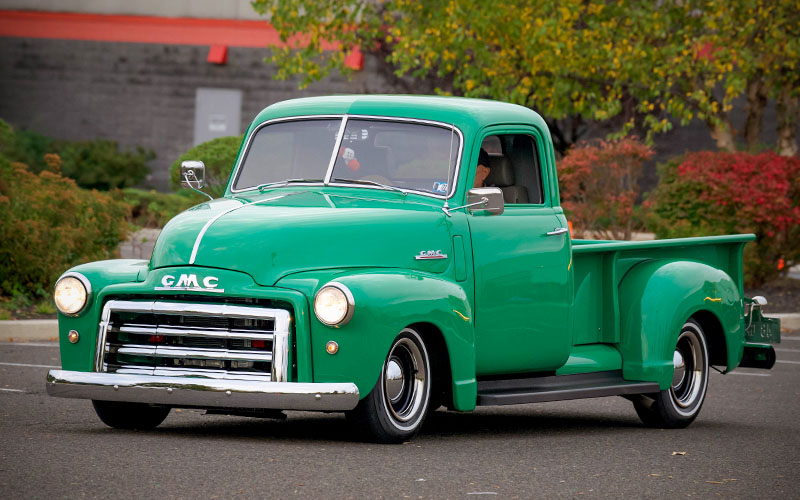
How to Find Classic Truck Valuation
The truest measure of a classic truck’s value is what it sells for on the auction block or dealer lot. There are a lot of good valuation tools out there, but unlike CarMax or the various Internet used-car resellers, none of those tools will cut you a check for your vehicle or pick it up on a flatbed for you. You’ll still need to do a little bit of work yourself if you want to get anything close to top dollar for your classic truck.
It doesn’t hurt to start with a valuation tool, however. It can give you a good “ballpark” figure for your vehicle, something that is especially important if you haven’t been vehicle shopping in a while. A good place to start is the NADA site – all you do is answer a few questions and you’ll be on the way to a reasonable estimate.
Want a second opinion? VMR (http://www.vmrintl.com/) can be a useful resource. The site is divided into 1984-present and 1946-1990 sections. Got a 1988 truck and don’t know which way to go? Use the latter, because you will get a value that more closely reflects the modern-classic status of the eighties trucks.
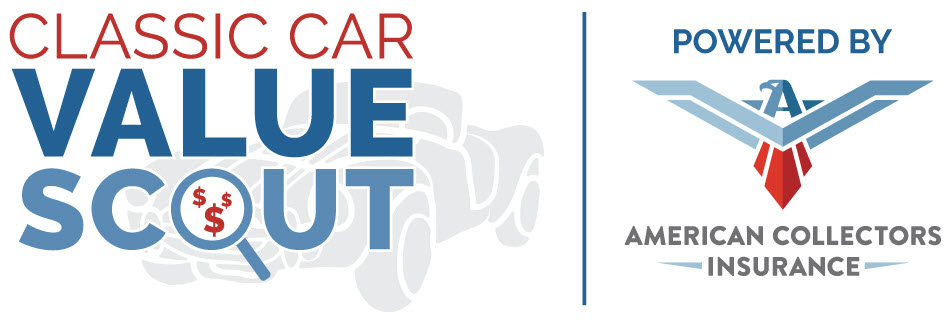
Using the Classic Car Value Scout
The Classic Car Value Scout, found at ClassicCarValue.com, is powered by American Collectors Insurance and gives you unique access to multiple value sources together in an easy-to-understand format. It is the first classic car value tool to offer this feature. Just enter the year, make, and model of your classic truck, and you will be taken to a simple page that summarizes the NADA, VMR, and Classic.com’s valuation data in one place. Answering questions about factory options on your vehicle will adjust the value further.
Classic Car Value Scout gives you access to all three condition ratings for NADA pricing, along with the itemized effect of options like factory air condition. You’ll also see the five categories of VMR values. They can vary widely – in the case of a 1977 Silverado long bed, the #1 value is literally ten times what the #5 value is – so you will want to familiarize yourself with how NADA and VMR classify vehicle condition. Here’s the five stage VMR guide:
#1 Excellent: A close to perfect original or a very well restored vehicle. Generally, a body-off restoration, but a well done body-on restoration that has been extensively detailed may qualify. The vehicle is stunning to look at and any flaws are trivial and not readily apparent. Everything works, and all equipment is original, NOS, or excellent quality reproductions. Note: cost no object concours restorations should be considered 1+ condition. These vehicles have been treated to a very expensive concours quality, frame-off, no expensed spared, nut & bolt restoration and do not get driven. They can command higher prices than CCMR’s standard #1 value.
#2 Very Good: An extremely presentable vehicle showing minimal wear, or a well restored vehicle. Runs and drives smooth and tight. Needs no mechanical or cosmetic work. All areas (chassis not required) have been fully detailed. Beautiful to look at but clearly below a #1 vehicle.
#3 Good: Presentable inside and out with some signs of wear. Not detailed but very clean. Body should be straight and solid with no apparent rust and absolutely no rust-through anywhere. Shiny, attractive paint but may have evidence of minor fading or checking or other imperfections. Runs and drives well. May need some minor mechanical or cosmetic work but is fully usable and enjoyable as is.
#4 Fair: runs and drives OK but needs work throughout the vehicle. Body shows signs of wear or previous restoration work. Any rust should be minimal and not in any structural areas. Conversely, the vehicle may be presentable but needs moderate mechanical work to be roadworthy. Cosmetics, body, and mechanics all need work to some degree.
#5 Poor: In need of complete restoration but is complete and not a rust bucket beyond repair. May or may not run. Not even close to roadworthy. Values for #5 cars are best estimated on a case-by-case basis, typically around 35-45% of the #4 condition. Rare and desirable models or models containing rare parts can be worth more.
The three NADA grades of Low, Average, and High, correspond roughly but not exactly to #5, #3, and #2; NADA generally does not compile values for true collector-grade vehicles.
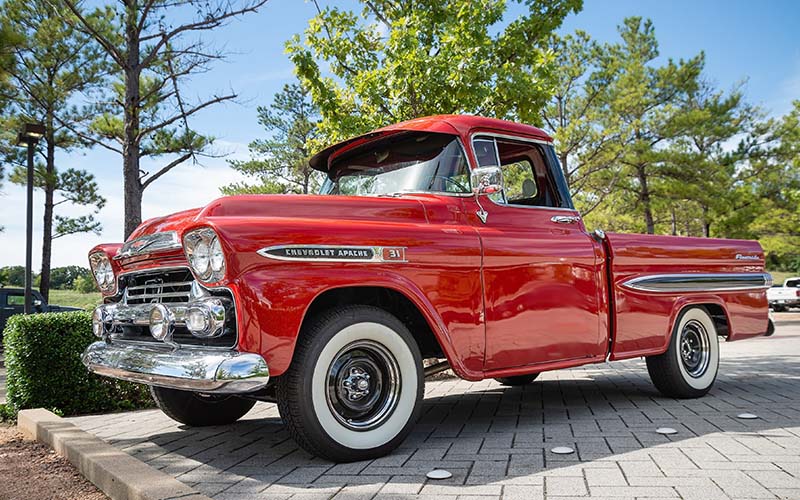
Seeing Classic Truck Values on Classic.com
Want some real-world “comps” to get a better sense of what your classic truck is worth? Classic.com is a great resource. Using “1977 Chevrolet C10” as an example search on the front page, we immediately gained access to over 100 completed auctions and fixed-price sales, with additional photography and information for many of these transactions. Classic.com also provides a graphic showing the trending value of the vehicle in question.
(Be careful, however – you’ll also wind up seeing a lot of great For Sale and auction listings, meaning that you could go on the site intending to sell your classic truck and wind up buying a second one!)
Combining the NADA and VMR numbers with individual listings on Classic.com should give you an excellent sense of what your classic truck is worth.
Getting A Real-World Number
Looking through the listings on Classic.com can also help you find a dealer who might be willing to make a purchase offer on your truck or list it via consignment. When you make that call, be sure you have an honest and complete listing of your vehicle’s problems and highlights – this can save everyone involved a lot of hurt feelings after the fact.
Keep in mind that dealers need to make money, so what you’re offered will always be less than what the truck could fetch on the open market. It’s up to you to decide whether you’d rather sell quickly or maximize the price you get for the vehicle.
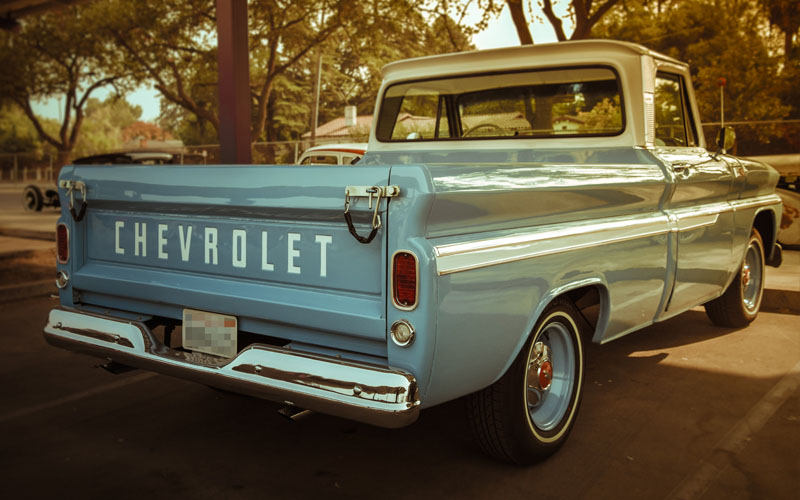
If You Don’t Sell
What if you decide that you’d rather keep your truck than have the money? Don’t worry – you haven’t been wasting time. Understanding your truck’s value can help you secure the correct insurance coverage to ensure that you can replace it in the event of a loss. It can also help you decide whether to fix issues with the truck, and how far you would be willing to go to fix them. In the case of the 1977 Chevrolet half-ton discussed above, it’s safe to say that today’s collectors are being just a little more careful with paint and body work than the truck’s original owner might have been after a decade or longer on a ranch. No matter whatyou end up doing with your classic truck, it’s a good idea to periodically get a sense of its value – understanding, of course, that in the long run the truck’s true value consists in the joy it brings you to drive, maintain, and even show off a bit!

Leave A Comment